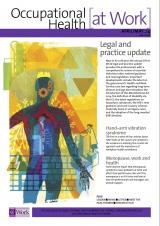April/May 2014 (vol. 10/6)
ContentsFeaturesNewsLegal
NewsResearch DigestResearch PlusCPD
Research Plus
Work scheduling could reduce HGV crashes
A large case–control study involving 1,047 heavy goods vehicle (HGV) drivers (99% male) in Australia found that scheduling journeys to avoid the midnight-to-dawn period would achieve a three-fold reduction in crash risk. The study examined 530 long-distance HGV drivers who had been involved in a police-reported crash over a two-and- a-half-year period, and 517 drivers who had not been involved in an accident. Drivers were excluded if they had been involved in an accident involving a fatal or serious injury.
Risk factors were assessed by questionnaire, and all drivers were provided with a diagnostic device to test for obstructive sleep apnoea. Diagnostic tests revealed that the prevalences of ‘likely severe’ sleep apnoea were 19% among case drivers and 16% in the control drivers; while prevalences regardless of severity, according to the Multivariate Apnoea Prediction Index scores, were 38% and 47%, respectively.
Despite these relatively high prevalences, sleep apnoea was not associated with increased risk of having a non-fatal, non-severe crash. The risk of being involved in an accident was significantly elevated for: driving between midnight and 5.59am (adjusted odds ratio (OR) = 3.42; 95% confidence interval (CI) 2.04–5.74), driving more than four hours without a break (OR = 2.44; CI 1.63–3.64), having an empty load (OR = 2.61; CI 1.72–3.97), and being a less experienced driver (less than 10 years in the job) (OR = 3.09; CI 2.27–4.20). Use of caffeinated drinks lowered the risk (OR = 0.30; CI: 0.22–0.39), as did being in the early stages (less than eight hours) of a trip (OR = 0.64; CI 0.45–0.91). More than one-third of drivers reported having had trouble staying awake while driving during the past month.
The Role of Sleepiness, Sleep Disorders, and the Work Environment on Heavy-Vehicle Crashes in 2 Australian States. American Journal of Epidemiology 2014; 179(5): 594–601.
Occupational Health at Work April/May 2014 (vol. 10/6) pp18



